
Shoes by Robert
A Study in Scarlet
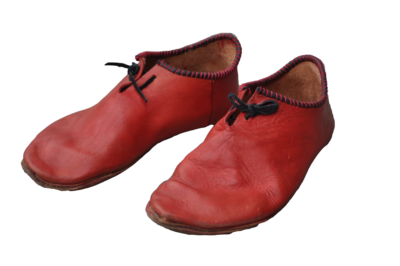
Did medieval people wear colored shoes?
Many if not most manuscript illustrations show black shoes, although we can find examples of colored shoes within their pages.
Leather that survives in archaeological deposits lacks color. Although a chemical analysis might reveal traces of dye, as far as I know this has never been done.
Certainly some shoes were painted, at least with decorative elements such a dots, lines, and simple shapes. Paint cannot be applied to large areas of leather, however, because it will crack and peel when the leather bends. Thus, paint is not a good way to color an entire shoe.
It is feasible that leather can be dyed, so there’s no reason that shoes couldn’t be various shades of red, green, yellow, or blue, especially for people of wealth and means.
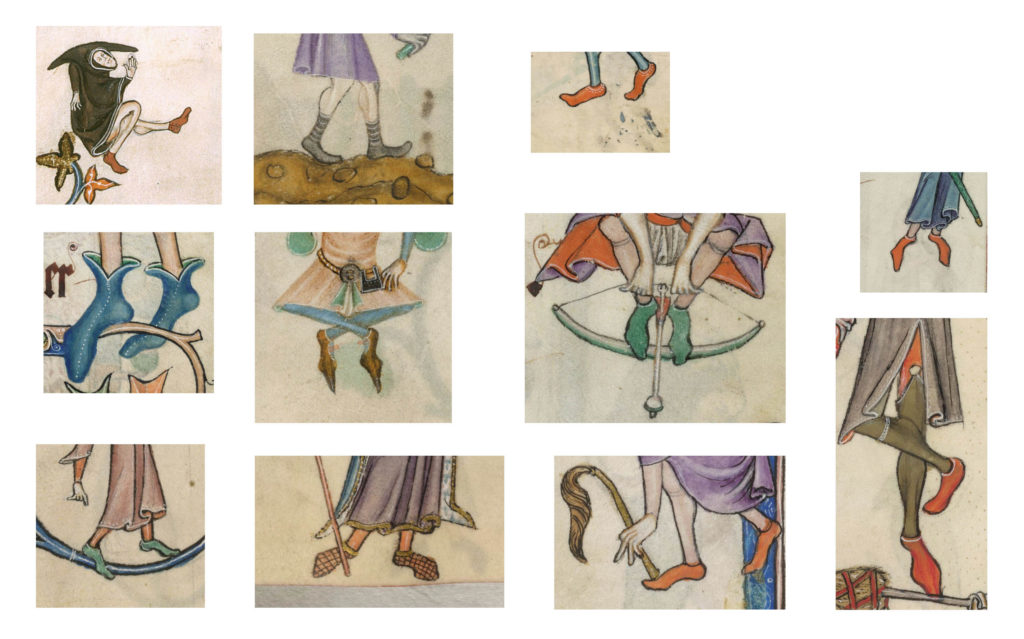
This pair of shoes includes a wider rand (5mm veg-tanned), and also uses a new kind of leather for me (veg-tanned, 4-5oz. uppers), to which I applied red dye, the first time I've colored any leather.
The dye comes from Tandy: Eco-Flow water-based, easy to wipe on with a rag. The color looks good, although my application gives it a rustic look. Running a test piece of dyed leather under water and rubbing it removed the dye without much work, so I am concerned that wearing these shoes in wet grass may cause the dye to disappear. Thus, this pair of shoes may be relegated to court and dancing.
As far as constructing shoes with a rand, that strip of leather adds significantly to the time needed to make a shoe, and requires strong fingertips to hold the upper, the sole, and the rand in alignment while pushing the awl through all three layers.
A rand increases time because it's necessary to use the awl going in both directions for each and every stitch. This happens because on the first pass the outermost hole is not big enough to accept both passes of the needles. Thus, it's necessary to make one hole, pass the needle and thread through it, then use the awl to widen the hole back the other direction, while using fingertips to keep all three layers aligned for both awl holes.
But note! My shoe-building is done on my knee, not on a last. It's quite possible, perhaps even likely, that using a last will keep all three layers aligned and therefore the rand won't increase the time needed to construct a shoe. This is yet one more reason to experiment with using a last for stitching.
As for the dye running when the shoe was turned, it did indeed do so, losing most of its color. After the turned shoes dried, I re-applied the dye with a rag, slopping some onto the rand, the sole, and the inside of the uppers. None of the slop can be seen, really, when the shoes are worn, so no real harm done. But I need to find something to make the dye stick. Or, better, used period dyes, as described by Dafydd ap Alan in his class handout "Adding Colour to a Drab Leather World."
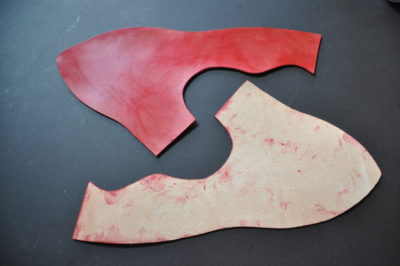
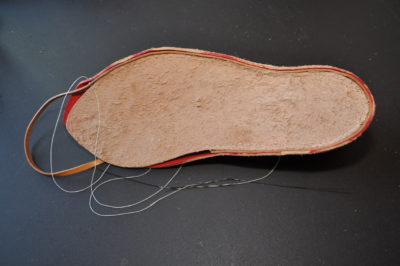
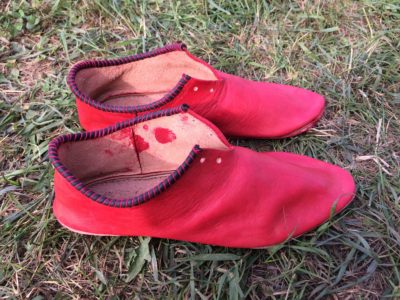
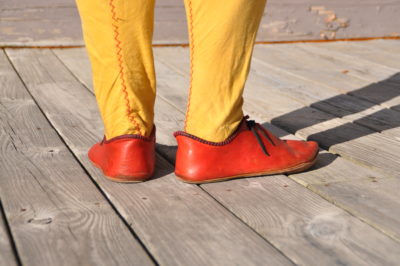
Last updated April 11, 2019.